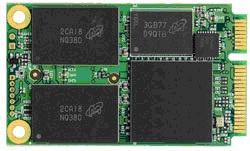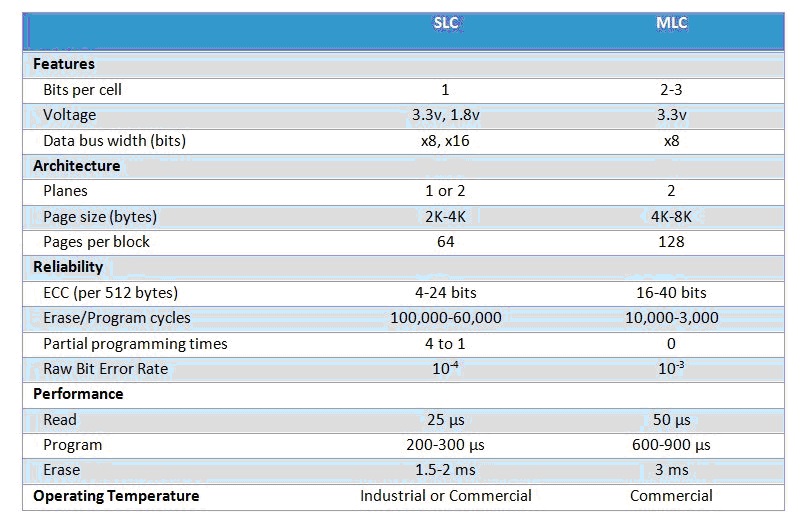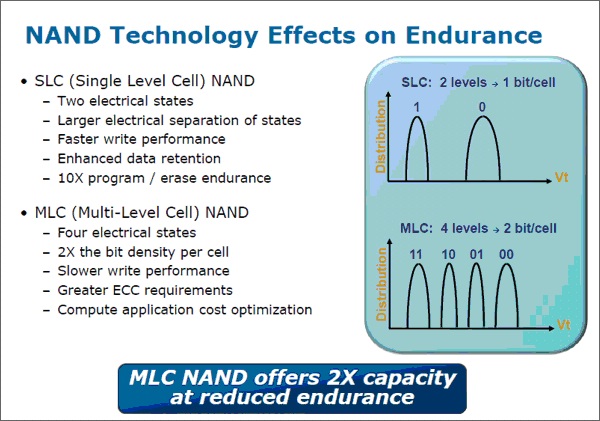An Overview of SSD SLC / MLC for Industrial Computer Application
When making the decision for solid state disks (SSD) based on flash memory technology, the consideration depends on the difference of multi-level cell (MLC) or single-level cell (SLC). It is now affordable to merit deliberate examination when planning a storage system. The prime distinction of MLC flash is the low price, but it deteriorates from greater wear rates and lower write performance when compared with SLC technology. SLC is accelerated, more reliable, and is featured in the best-performing storage arrays but it is more expensive.
MLC and SLC Flash SSD
All flash memory deteriorates from wear, which happens because erasing or programming the cell results it to wear due to the voltage applied. Every time it happens, a charge is trapped in the transistor’s gate dielectric and causes a permanent shift in the cell’s attribute, and after a number of cycles, illustrate as a failed cell. SLC needs a single cell to store one bit of data. MLC memory is more complex and has the ability to interpret four digital states from a signal stored in a single cell. This create a denser given area but it wears out more quickly. An MLC cell is usually rated at 10,000 erase/write cycles, whereas an SLC cell might last 10 times that before failing. However, manufacturers of products consisting of MLC cells can and do have improving technologies and techniques at their disposal.
There are several amelioration techniques that are used. Wear-leveling moves write cycles around the chip so that cells wear away evenly. On-device de-duplication lowers the volumes of data written thus reducing wear. Redundancy stocks a fraction of the device’s capacity to replace cells as they fail. Write optimization stores data write so they can be made in big chucks to decrease the number of write operations. Enterprise MLC, eMLC, is the developing term for MLC products that integrate such techniques. Most of said techniques are implemented in the device controller – the interface between device and computer – with companies like Intel among the most advanced in implementing such techniques. And despite the endurance issues related to SSDs, they remain more reliable than spinning media.
What defines the technology is the implementation. For applications such as high-speed databases, in which performance is measured in terms of transactions per second, should be matched to the appropriate technology selected on the basis of price or performance. Regardless of this, MLC and SLC are typically used for different applications because of the four-fold price difference per gigabyte between them. MLC can appear in consumer-grade products and in the enterprise, where performance is not the main consideration even of its importance.
When servicing in the same storage system, the two types of SSD can be categorized in the same way as tearing with spinning media; most are included in a form of automated SSD tearing. SLC usually caps the storage tier tree where high-speed access to huge databases is vital and price is a secondary issue. Future products have the potential of progressively integrating both flash SSD types and spinning media in performance/cost-based tiers. As prices go down and reliable techniques improve, MLC technology’s price advantage will be more significant of SLC for all but the most demanding of applications, as it remains considerably faster and more robust than spinning media.
Performance
Since the same basic flash cell is used for SLC and MLC NAND flash, MLC can more than double the density with almost no die size penalty, therefore no manufacturing cost penalty beyond possibly yield loss. The read bandwidths between SLC and MLC are comparable. In general, the available bandwidth of a solid-state drive is more related to the controller architecture and design than to the speed of the flash.
Endurance
SLC NAND flash’s endurance is 10 to 30 times greater than MLC NAND flash. The endurance and the difference in operating temperature results in the reason why SLC NAND flash is considered industrial-grade and MLC NAND flash is considered consumer-grade.
Error Rate
MLC NAND flash has an error rate 10 to 100 times more frequent than SLC NAND flash and it degrades faster with increasing program or erases cycles. This is due to the extremely narrow margin between voltage thresholds in MLC. The four principal error mechanisms that affect flash data reliability are program disturb, read disturb, leakage, and charge trapping.
Even though MLC NAND has a significant advantage when it comes to cost, SLC NAND flash is an obvious winner for rugged avionic, military and industrial applications. MLC NAND flash issues with data retention at higher temperature, greater bit error rates and slower access times make it unsuitable for these applications. Choosing the most reliable non-volatile storage is important when it affects the human lives, critical missions, and valuable capital.







